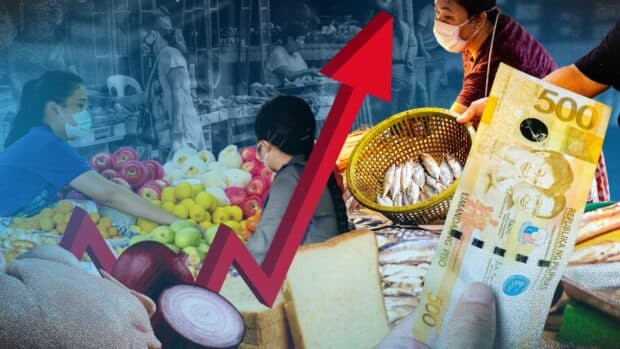

Inflation picked up in November after the onslaught of powerful storms hit food supply while a weak peso bloated import costs of key items like oil, although the uptick was mild and should not be a problem for the ongoing easing cycle of the central bank.
Inflation, as measured by the consumer price index (CPI), quickened to 2.5 percent year-on-year last month from 2.3 percent in October, the Philippine Statistics Authority (PSA) reported on Thursday.
READ: Inflation quickens to 2.5% in November
The latest CPI reading matched the projection of eight economists polled by the Inquirer last week, which settled within the 2.2- to 3-percent forecast range of the Bangko Sentral ng Pilipinas (BSP) for November.
Year-to-date, inflation averaged 3.2 percent, well within the 2- to 4-percent target range of the BSP.
National Statistician Claire Dennis Mapa said the destructive typhoons that slammed onto the country from late October to mid-November stoked vegetable price inflation, which sped up to 5.9 from -9.2 percent before.
Article continues after this advertisement
Rice prices
But that was offset by slower price gains of rice at 5.1 percent, easing from 9.6 percent in the previous month. Overall, food inflation accelerated to 3.4 percent in November from 2.9 percent in October, which was responsible for 65.9-percent of the spike in the headline rate last month.
Article continues after this advertisement
“We are committed to maintaining price stability by ensuring inflation remains low and manageable,” Secretary Arsenio Balisacan of the National Economic and Development Authority said.
“This will be supported by prudent monetary policies and strategic trade measures in the near term, as well as improved access to quality job opportunities and productivity-enhancing reforms in the medium term,” Balisacan added.
Another source of upward price pressures, PSA’s Mapa explained, was a depreciating peso that revisited the record-low level of 59:$1 twice in November.
“It’s a risk because it feeds into our commodity items, particularly fuel,” he said. The Philippines is a net oil importer.
More easing?
For its part, the BSP said the November price growth was “consistent” with its assessment that inflation will continue to trend closer to the low-end of the target range in the near term.
The moderate spike in inflation could help build the case for another interest rate cut at the Dec. 19 meeting of the Monetary Board, the last for this year.
So far this year, the BSP trimmed the key rate twice by a total of 50 basis points (bps) to 6 percent. The first cut amounting to a quarter point happened in August, with Governor Eli Remolona Jr. aiming for a “calibrated” easing cycle.
But Remolona also floated the possibility of a pause this month, citing persistent price pressures. Nevertheless, the BSP chief said an economy that posted a weaker-than-expected growth in the third quarter might prompt the central bank to cut rates again in December to perk up demand.
In a commentary, economists at Chinabank Research said the benign inflation last month would give the BSP more space to further slash borrowing costs.
“Hence, we are seeing possibly another 25-bp cut from the BSP at its upcoming policy meeting on Dec. 19,” Chinabank said.







:max_bytes(150000):strip_icc()/__opt__aboutcom__coeus__resources__content_migration__serious_eats__seriouseats.com__images__2015__03__20150324-goat-cheese-vicky-wasik-7-a291636ccb4f4b83b867f0bb2a138d97.jpg?w=100&resize=100,75&ssl=1)



